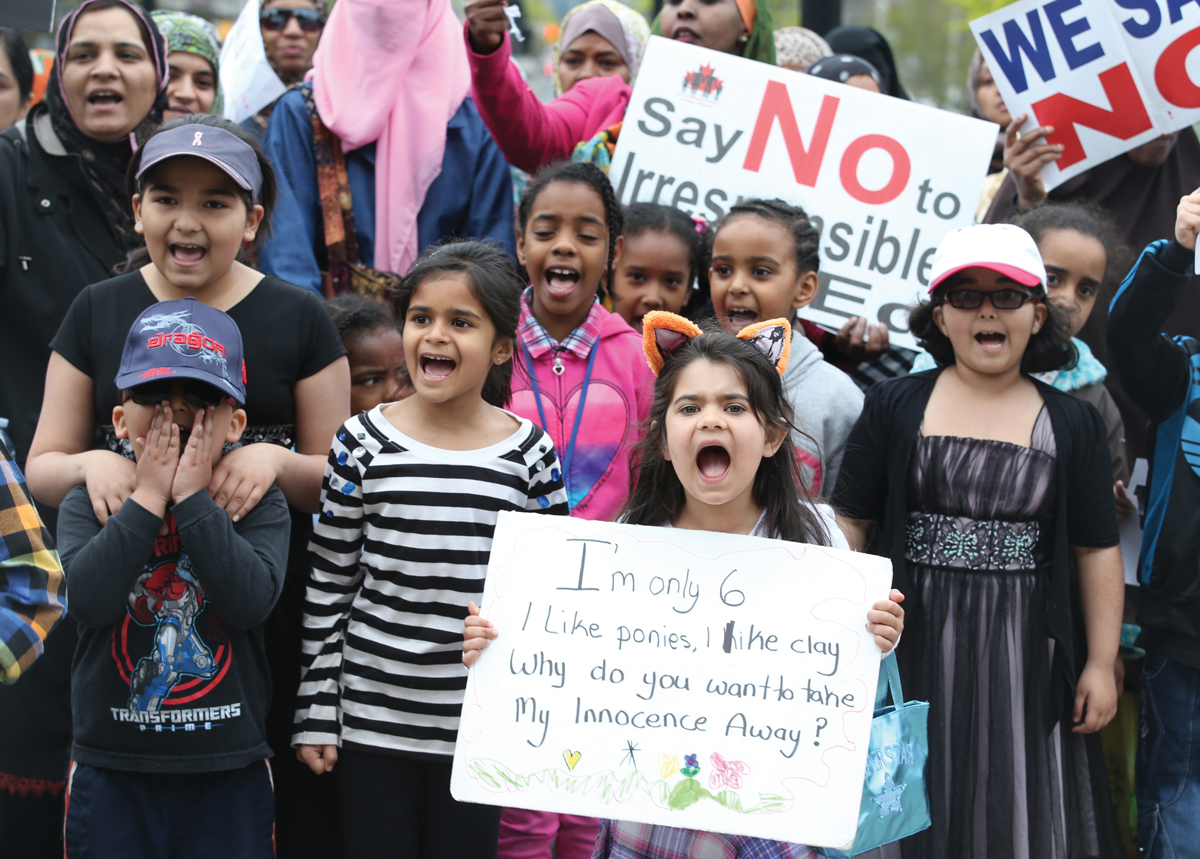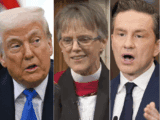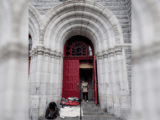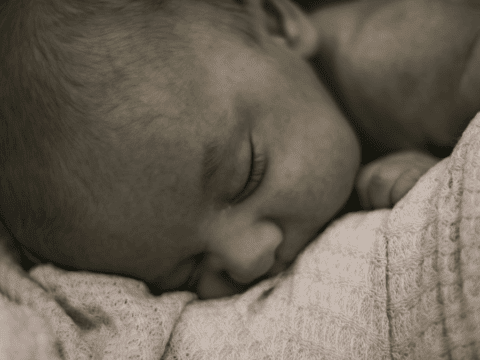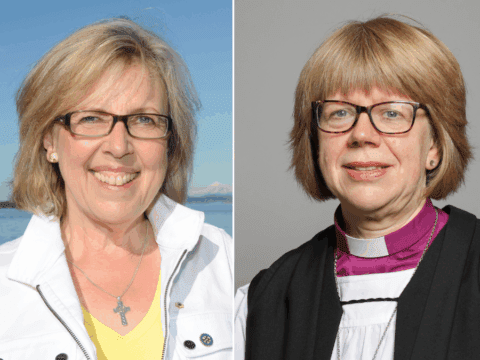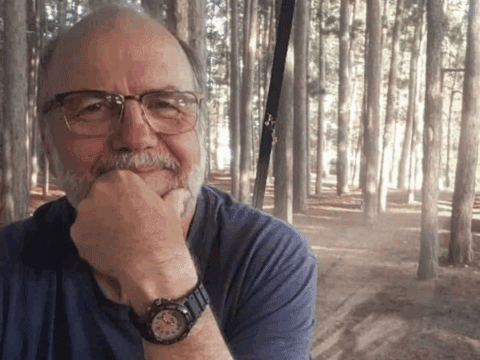The niqab? Susan Mabey dismisses the word with a snort. “That’s not our issue,” the teacher says. Veiled Muslim women are as common as clouds in the Toronto neighbourhood where Mabey teaches. Nobody at Thorncliffe Park Public School, where most of the 1,360 students are the children of Muslim immigrants, has ever made a fuss about that. But there certainly are issues here — and Mabey, a former United Church minister, is one of the few who has dared to raise them in public.
The most pressing issue is fear — not fear of the assault on “Canadian values” that former prime minister Stephen Harper imagined during last fall’s federal election campaign. But real fear for the personal safety of students and teachers.
You may unsubscribe from any of our newsletters at any time.
After the provincial government implemented a new sex-education curriculum in Ontario schools last fall, Thorncliffe Park was the focus of rowdy demonstrations staged by angry parents, most of them Muslim. Many removed their children from classes in protest, vandals scrawled graffiti on the school and ugly emotions flowed freely. At the peak of the protest, about 750 students were being kept out of class. More than 100 had still not returned by the December break.
Underpinning the protests was an increasingly explicit homophobia, with protesters complaining the curriculum promotes a “homosexual agenda.” Their leaders demanded to know how many homosexuals the Toronto public school board employs and how they are distributed among schools — “as if,” says Mabey, “we had to self-disclose and then be apportioned to this school or that school.”
The backlash against the new sex-ed curriculum was not confined to Thorncliffe Park, nor was it limited to Muslims. But Thorncliffe Park was the epicentre for protests. The turmoil there was an object lesson in the push and pull of Canadian multiculturalism — and highlighted the often-overlooked but central role of the public school system in instilling mainstream, secular Canadian values in the children of religiously observant immigrants who may be fiercely opposed to them.
Even before the emergence of Ontario’s new sex-ed curriculum, many teachers at Thorncliffe Park steered clear of anything to do with sex education, according to Mabey. She adds that fear of being exposed and shunned has previously driven gay teachers out of the school.
What sets Mabey apart, and inspired her to push back against the protesters, is her own experience of anti-gay discrimination: almost 30 years ago, when she was on the verge of being ordained as a minister, Mabey was driven out of The United Church of Canada because she made the mistake of informing her superiors she is a lesbian. Her case set the wheels in motion for the church’s landmark decision in 1988 to open its ministry to candidates of all sexual orientations. But Mabey didn’t stick around; she became an elementary school teacher instead of a minister and has emerged as one of the few in her community willing to confront this wave of religiously inspired intolerance.
The prejudice Mabey has seen at Thorncliffe Park is many-faceted. “There’s a tremendous amount of anti-Semitism in the community, and it’s very anti-Hindu,” she sighs. “Some kids here are afraid to say they’re Hindu. There’s also a lot of attempted intimidation by children of other children if they’re not Muslim or if the girls don’t wear the hijab.”
“We hear a lot about the fires of hell,” she adds. “In Grade 1, Grade 2.”
When she was teaching about Hanukkah in a comparative religion class recently, Mabey says that one Grade 2 student piped up, “Jews kill Muslims.”
Thorncliffe Park is Canada’s largest public school. It “used to be a fabulous place to work,” says Mabey. But now she worries that her school and others are neglecting their duty to teach tolerance in order to keep an uneasy peace with intolerant parents.
There were signs of trouble before the September walkout. Last winter, the school planned to celebrate Pink Shirt Day, a nationwide event that commemorates a protest in which students at a Nova Scotia high school wore pink shirts in solidarity with a younger student who had been bullied for wearing one earlier. The aim of the event is to combat bullying. But many parents worried that its real purpose was to promote homosexuality. Thorncliffe’s principal, Jeffrey Crane, says hundreds kept their children away from school for a week in protest.
Released around the same time, the revised sex-ed curriculum was seen as long overdue by most educators and was welcomed by the Institute for Catholic Education. But alarming rumours about its content flew through the Muslim community, driven largely by anonymous leaflets. “Some of the stuff people were saying was so outrageous, I was amazed anybody could actually believe it,” Crane says. “But they were. They were believing crazy things.”
Parents feared that a Grade 1 lesson giving proper names to body parts was an introduction to masturbation. “They thought in Grades 5 and 6 we were going to show students pornography and teach them about anal sex,” Crane says. “It just went on and on.”
Even rainbows, the staple decoration of elementary school classrooms everywhere, became contentious, he adds. “They think rainbows are all about homosexuality.”
Prodded by a Facebook campaign run by a conservative coalition called the Canadian Families Alliance (CFA), some Thorncliffe Park parents joined other opponents of the new curriculum in hauling their children from classes for a week last spring. The mass exodus from the school began in earnest shortly after the new academic year started last September.
The CFA accused the government of Premier Kathleen Wynne, in whose riding Thorncliffe Park school is located, of undermining families and trampling on the rights of parents as the primary educators of children. “We fear the conflict that can arise when information from school does not align with our cultural, religious, or family values,” the group declared on its website.
At the peak of the strike, at least half of Thorncliffe Park’s students were not showing up for classes, and the principal was considering cuts to his teaching staff. Protesters set up improvised classrooms in a nearby park and community centre, and long lines of parents delivered letters to the school objecting to the “radical sex-ed curriculum” and explaining they were considering home-school or private school alternatives. Inflammatory Facebook posts, vandalism and accusations of bullying raised tensions as the boycott stretched into October.
The worst of the backlash subsided after Mabey spoke out in the pages of the Toronto Star. At the same time, Wynne denounced the appearance of homophobia in the school, and a coalition including more liberal-minded Muslims and a diverse spectrum of new Canadians spoke out strongly in favour of the new curriculum.
Any talk of the human body remains highly sensitive within the observant Muslim community.
In response to the uproar at Thorncliffe Park, principal Crane staged a series of information sessions for parents. Most are placated when they learn the innocuous truth about the sex-ed program, he says. Even so, any talk of the human body remains highly sensitive within the observant Muslim community, and Thorncliffe has long accommodated those who object to it on religious grounds.
In typical schools, boys and girls are divided into separate classes before they are taught their first lessons about puberty in Grade 5 (under the new curriculum, puberty lessons will now begin in Grade 4). At Thorncliffe and other heavily immigrant schools in Toronto, a third group of exempted students is sent off to a separate classroom to learn about puberty in a lesson that does not mention the basic matter of sexual development but focuses instead on hygiene.
“Religious accommodation” is standard policy in such schools, which will continue to offer toned-down lessons to the children of parents who do not want them to attend the new “healthy sexuality” classes. But decisions get tougher when actual values are at stake. This is where multiculturalism meets its hard limit.
If you phone the Peel District School Board in suburban Toronto, the first thing you learn from the recorded voice is that Peel schools are “where values are taught daily.” In the business of moulding young Canadians, the traditional “three Rs” nowadays make room for outright indoctrination in advanced democratic principles. And as Peel director of education Tony Pontes made clear when he addressed the sex-ed protests both in a letter to parents and a speech last fall, there can be no exemptions.
“We cannot — we will not — by action or inaction endorse discrimination,” Pontes said in his speech. “Supported by legal opinion, bolstered by our core values, I would no more say yes to someone wanting a child excluded because of a discussion about LGBTQ than I would a discussion about race or gender.”
For Pontes, the Ontario Human Rights Code etches a bright line between reasonable and excessive accommodation. “If we are to build an inclusive school system, which is our mandate, then we cannot provide an accommodation for any requests to exempt a student from a part of the curriculum that touches on protected grounds under the Ontario Human Rights Code,” he says in an interview.
The code prohibits discrimination based on a number of grounds, including gender identity and sexual orientation. So when Grade 3 students learn about some of the differences among people — including the fact that some are gay — Peel schools will not arrange for them to learn about washing their hands instead.
“That’s where we draw the line,” Pontes says. “We always respect that a parent can make the right decisions for their children, but we can’t be in contravention of the human rights code and our beliefs about inclusion.”
As Pontes notes, education about “healthy sexuality” is something many parents are happy to leave to the experts. And just as many of them, it seems, are prepared to let public schools handle the even more highly charged business of teaching and enforcing the values — tolerance, for one — that underpin courses like Ontario’s new sex-ed curriculum. It is one of the characteristics of Canada’s laissez-faire multiculturalism: the established majority is all in favour of according minorities equal rights but prefers not to get involved in the sometimes messy business of ensuring conformity to the country’s core values.
That is certainly not the case in Europe and Scandinavia, where politicians of all persuasions have loudly proclaimed “the death of multiculturalism,” responding to an unprecedented wave of Muslim migration with demands for complete assimilation. Since 2011, it has been illegal in France for women to wear full face-covering veils such as niqabs in public. Overtly anti-immigrant parties now occupy legislative seats in Denmark, Norway, Switzerland, Austria, Sweden, the Netherlands and Greece.
Some European writers and politicians insist that anyone who does not recognize the threat observant Muslims pose to what they call “Enlightenment values” is blindly welcoming the destruction of their own societies.
Those views have echoed widely in Quebec, with its long-standing and legitimate concerns about cultural survival. The result was a provincial commission assigned to investigate reasonable accommodation in the province. In its 2008 report, the two-person commission largely dismissed fears of undue outsider influence while encouraging immigrants to integrate into Quebec society.
“In exchange,” commissioner Charles Taylor declared, “the whole society must give them the tools to do all this.”
English-speaking Canadians appeared to embrace a similar position during last fall’s federal election campaign when they rejected Harper’s invitation to push back against observant Muslims and what he called “a culture that is anti-woman.” But there has been no equivalent of the Bouchard-Taylor commission to help negotiate the boundaries in English Canada; multiculturalism is universally accepted but rarely investigated. The difficult business of making it work is largely outsourced to the public schools.
Growing numbers of European intellectuals would identify that as a fatal flaw guaranteed to create permanent ethnic ghettos and ultimately bring about social breakdown. The fact that nothing of the sort has happened or appears to be happening — Canadian multiculturalism remains a uniquely successful form of social integration, not division — shows just how well our schools do their job.
It is in public schools that immigrant families discover the hard terms of the bargain they have accepted in seeking a better life in Canada: in return for a brighter future, Canada steals their children. Different cultural traditions may survive, accommodations can be made, but the basic bargain is unalterable.
This is the unavoidably harsh reality of immigration, and one big reason why a largely innocuous curriculum focused on the human body — that most intimate of subjects — was able to inspire such panic among parents at Thorncliffe Park school. The protests affirm just how effectively the children of immigrants are being shaped by a new identity.
Canadian multiculturalism works because it ignores culture, affirming universal rights and values in the place of blood and belonging. No effort to uphold old-country beliefs can touch it, and no effort to inculcate host-country traditions is needed to support it.
But allegiance to Canadian values is not something that springs to life spontaneously in Canadian air. It depends on people like Susan Mabey to explain to seven-year-old children that Jews don’t kill Muslims and gay people will not burn in the fires of hell. Or to stand in front of graffiti sprayed on school walls, as Mabey did one morning last September at Thorncliffe Park, so its hateful message wouldn’t be the first thing students and parents saw as they arrived.
And it’s here, in the hurly-burly of a crowded elementary school, where every lesson becomes a painstaking negotiation between clashing cultures, that the real work of making new Canadians gets done.
“There is something to be said for maintaining the value of public education,” Mabey says.
This story originally appeared in the February 2016 issue of The Observer with the title “When values collide.”

